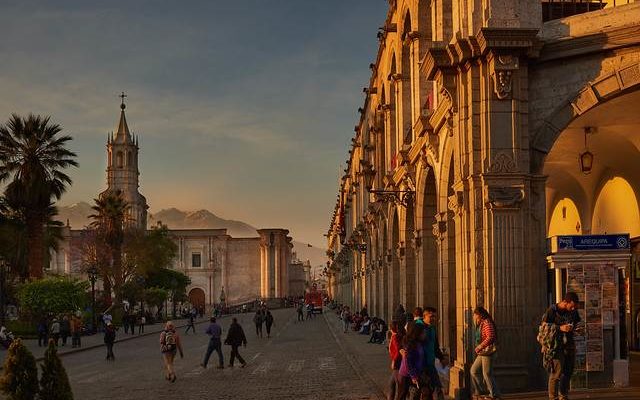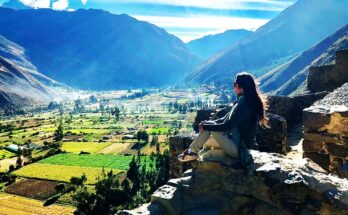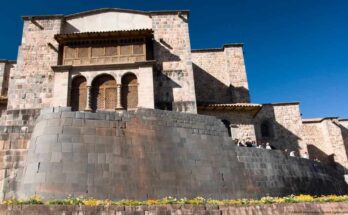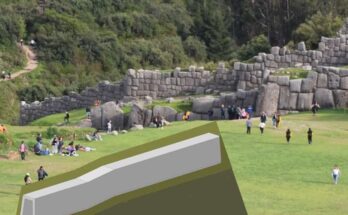Peruvian food is in the middle of a culinary revolution that is taking the western world by storm; as traditional recipes are being modernised to create new and exciting fusions and flavours.
Peru’s geography has gifted this beautiful country with a number of micro climates that all produce crops that are unique to their region. These rare and delicious foods are now being showcased across the globe as Peruvian food continues to grow in stature.
Now is a great time to visit Peru and get up close and personal with these new flavours.
So, without further ado, let’s start the countdown!
5: Arequipa
The ‘White City’ of Arequipa, a UNESCO World Heritage Site, rests in the shadow of ice-capped volcanoes. This compact, laid-back city caters perfectly for those seeking to enjoy a dramatic Andean setting combined with exploration of the colonial churches and historic museums.
What can I see?
A highlight of the city is the beautiful Santa Catalina Convent, a walled colonial town within a city, opened to the public in 1970 after 400 years of secrecy. For lovers of the outdoors you will also love The Colca Canyon. This canyon is twice as deep as the Grand Canyon and a visit to Condor’s Pass is a must as you are virtually guaranteed to see wild Andean Condor’s at close range as they float on the rising thermals scanning for carrion.
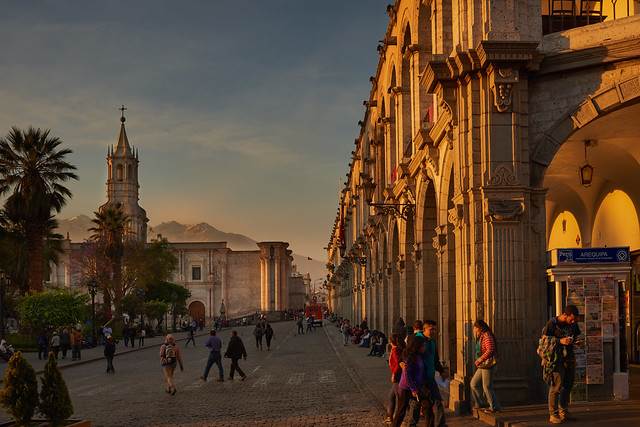
What can I eat?
As an important Andean city, Arequipa is a fabulous place to try some of Peru’s most traditional dishes. The ancient people of this region cultivated grains and potatoes in abundance, combining them with local herbs to create dishes that have long-since been a staple in the Peruvian kitchen.
Ocopa arequipeña is a popular appetiser, and is a thick sauce made with aji amarillo yellow chilli, peanuts, huacatay (black mint), milk and cheese. It’s usually served over sliced boiled potatoes, sometimes with pork or fried cheese. Also immensely popular as a main dish, Chupe de Camarones is a shrimp soup, and although Arequipa is landlocked, its river shrimp are super tasty. The shrimp are generally served in the shell which adds a deeper flavour, and Peruvians love to suck on it to get out all the goodness!
Other dishes worth trying in Arequipa are cuy (guinea pig – not for
the faint-hearted, but oh-so-popular), adobo (a hearty pork chop stew),
and rocoto relleno (spicy peppers stuffed with minced steak, cheese,
olives, peanuts and spices). However, Arequipa is a great place to try
any Andean speciality, so don’t be shy and ask for an explanation of the
menus you come across.
4: Ica, Pisco & Huacachina
A little bit off the beaten track for most tourists, but Ica and Pisco are great places for adrenaline junkies looking to satisfy their thirst for adventure!
What can I see?
For the adventure lover looking to fiesta until the early hours then the little party Oasis of Huacachina is just a stones throw away. A visit to the vast sand dunes would not be complete without a ride on 4×4 buggy that will skid and slide up, down and around the dunes!
What can I eat?
In Ica and Pisco, it’s less about what you can eat, and more about what you can drink. Pisco is the birthplace of the Peruvian grape brandy of the same name, and Ica is surrounded by the country’s finest wineries. Tours of both are an enjoyable way to spend a few hours, learning about the processes used to make them… and it would be rude not to have a little taste, wouldn’t it?
3: Chachapoyas
The Chachapoyas region has a special climate as it lies between the Andes and the transition section to the Amazon rainforest. This diverse climate provided a variety of crops and raw materials that the people used as key commodities that played a vital role in the success of the Chachapoyas people who ruled this land pre Inca times.
What can I see?
The is a lot to do and see in this area, be it trekking to the third largest waterfall in the world, visiting Lago de Los Condores where mummies inside clay sarcophagi have been discovered, twitching to catch a glimpse of the conspicuous “Cock of the Rock, or my personal favourite would be a visit to Kuelap. The remains of this fortress that protected the community living within its walls stretches 600m around and reaches up to 20m high in places. This fascinating archaeological site that shows how these people defended themselves pre Inca.
What can I eat?
Sitting on a crossroads between the mountains and the Amazon makes Chachapoyas a convenient stop to try Peru’s ‘jungle cuisine’. Typical dishes include purtumute (a tasty dish of beans, mote hominy corn, and coriander) and platanos rellenos (bananas split down the middle and stuffed with minced meat and ground peanuts). Also popular are juanes de yuca, which is ground cassava mixed with rice, chicken and spices, wrapped in a leaf and steamed to create a popular regional version on the tamale. Peru’s jungle continues to be explored by adventurous chefs, looking for exciting new ingredients (such as maca) not available elsewhere.
2: The Northern beaches
Towns such as Tumbes and Mancora offer sizzling hot sunshine alongside Peru’s finest seafood. These beaches come alive in the summer months when tourists and locals flock to the beaches for some sun and relaxation. For those looking to combine a little beach with history than you will not be disappointed.
What can I see?
The chilled out northern beaches on the Pacific coast are by far the best beaches in Peru. Whether you are looking to relax in one of the luxurious boutique hotels on the beachfront, or spend a couple of days visiting some of the less visited archaeological sites in northern Peru, or combine both, then this is the place for you. You could spend a couple of days away from the beaches exploring ancient citadels, temples and pyramids of The Chimu and Moche cultures that date back to 850AD.
What can I eat?
As you’d expect, the coast is seafood heaven. Peru’s most famous dishes, the fantastic ceviches, of fresh fish cured in lime with chilli and coriander, are freshly-prepared by the beach. You’ll also find hearty, spicy seafood soups such as parihuela and sudado, fried fish dishes such as jalea and chicharron (spiced scampi), best accompanied by cold beer or Inca Kola.
The single most famous dish of the region is black clam ceviche (ceviche de conchas negras). Peruvians will travel especially to Northern Peru for the best of these, so don’t miss out!
1: Lima
Known as ‘The City of Kings’, this energetic coastal capital is a fantastic place to spend time visiting some of the continents best museums by day and then eating at world famous restaurants at night.
What can I see?
Lima has a vast array of fascinating museums. My favourite is the Larco Herrera museum. The galleries exhibit ceramic, textile and precious metal artefact from over 3,000 years of pre-Colombian history. Set in the gardens of an 18th Century colonial mansion this private collection features the finest gold and silver collection from ancient Peru. Visiting this museum before exploring Peru is a great introduction to the countries rich history.
What can I eat?
This city has 8 million hungry mouths to feed, and it shows – there are restaurants at every turn! Lima is the single top food destination in Peru, as you can find almost anything that the country has to offer, from street food carts to world-class restaurants. Specifically, Lima is known for excellent ceviche, and it’s also a great place to try typical dishes such as causa rellena or lomo saltado stir-fries.
Exploring the neighbourhoods of Lima is a great way to try out different foods and see different parts of the city. Swanky Miraflores is home to the cities most cutting-edge chefs, with restaurants like Astrid y Gaston (contemporary Peruvian) and Amaz (modern Amazonian) flying the flag. The Old Town is full of tiny restaurants offering great value set lunches, where a two course meal with a drink will cost no more than a couple of pounds. Take a trip to nearby Chinatown to explore the street-food options on offer, such as the ever popular, more-ish boiled and salted quails eggs and tamales (spiced corn cakes steamed in a banana leaf). If you’re a committed foodie, you could even time your trip to coincide with the city-wide food festival Mistura, when the place transforms into a gastronomic paradise for professionals and general public alike.
Finally, whether Lima is your first stop or last, it wouldn’t be complete without dinner with a sea view and a pisco sour. The bohemian district of Barranco has a number of excellent seafood restaurants lining the famous Bajada de Baños, a charming walkway leading to the beach. Less touristy, but ever so popular with Peruvian families, is the area of La Punta, where you can feast on huge ceviche platters amongst the towering old houses of Lima’s well-to-do upper classes
